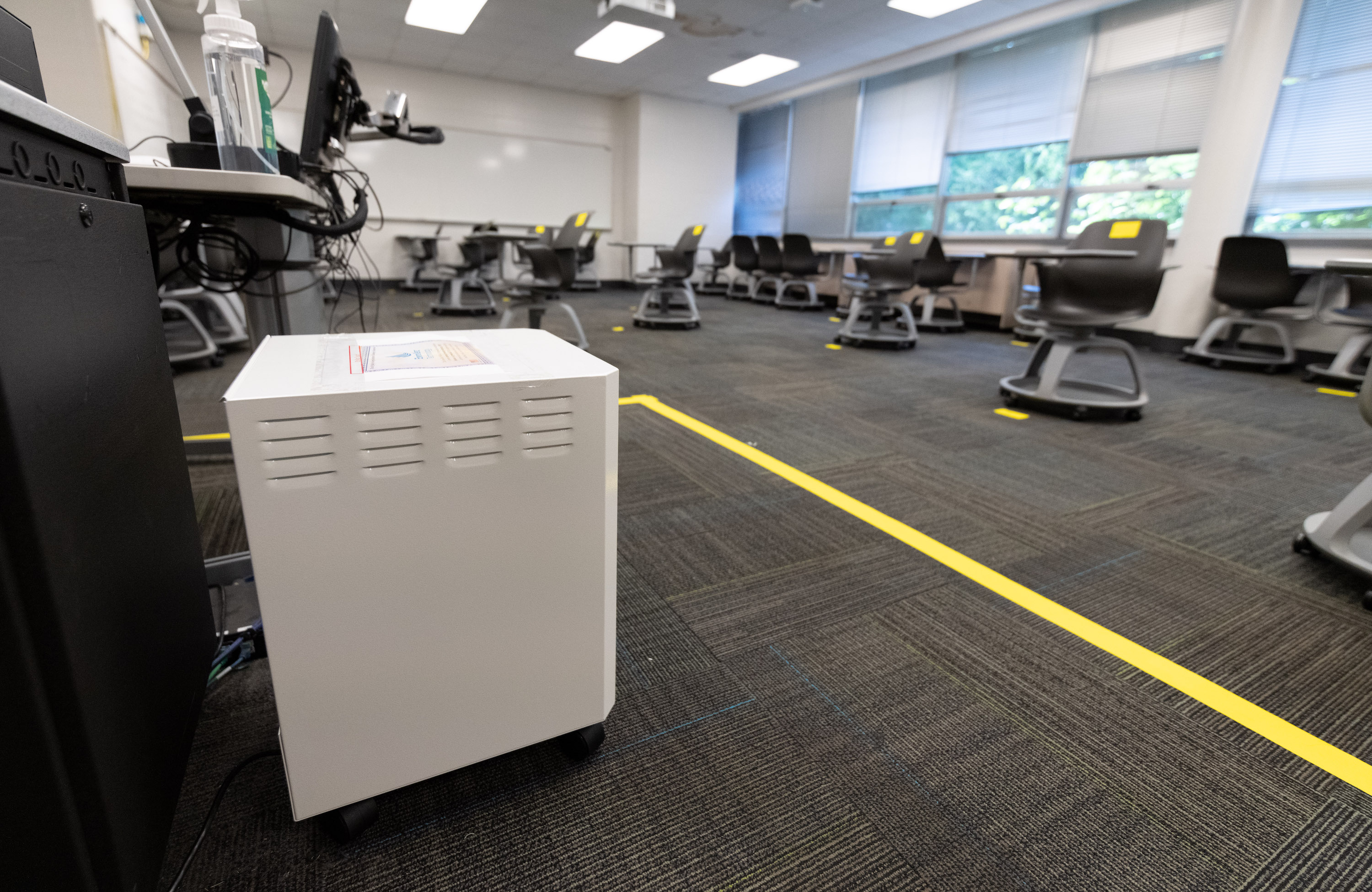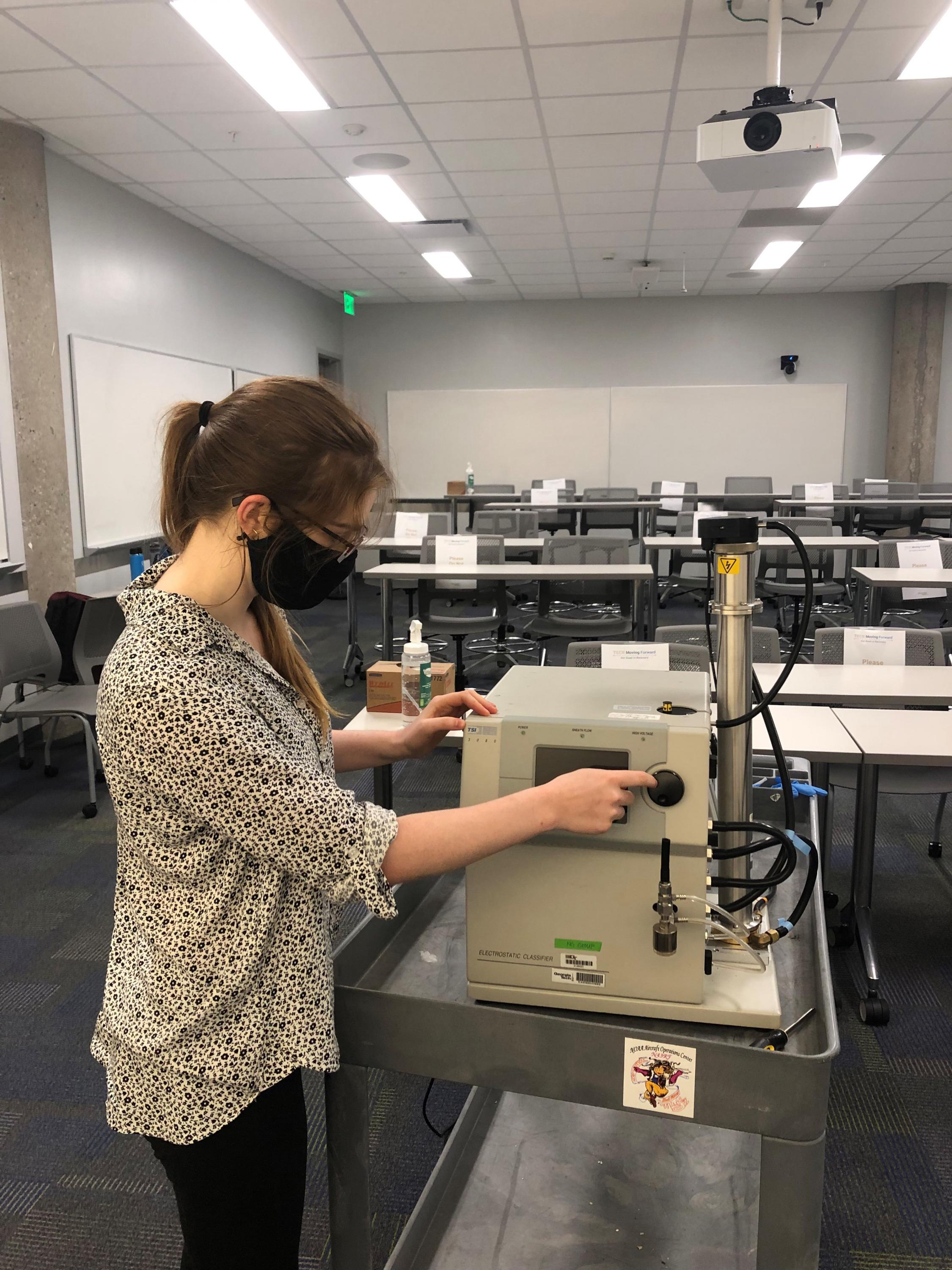For months, Georgia Tech has been actively promoting safety measures to help prevent the spread of the coronavirus and keep the campus community as safe as possible. Protocols include providing personal protection equipment (PPE), disinfecting public areas and high-touch surfaces several times a day, and physically reconfiguring classrooms to enable social distancing. But another area being addressed behind the scenes – or behind the ceilings and walls – is the indoor air handling systems on campus. According to the Centers for Disease Control and Prevention (CDC), taking steps to ensure indoor ventilation systems are operating at peak performance as well as increasing the flow of outdoor air are key to maintaining a healthy and safe indoor environment.
As part of the ramp-up plan to prepare the campus for the phased reopening, teams in Facilities Management have been evaluating and performing preventive maintenance of the heating, ventilation, and air conditioning (HVAC) systems in every resident instruction building on campus so they may provide a high degree of indoor air quality. This includes:
- Replacing ultraviolet (UV) bulbs in all applicable HVAC systems that are either bad or near the end-of-life stage.
- Installing Merv-13 (Minimum Efficiency Reporting Value) filters as an upgrade to existing filters where the HVAC equipment allows.
- Increasing the fresh air intake and exchange rate in buildings.
“Each building’s system is unique, but in general, we are ensuring these systems are operating at their peak condition and conforming with campus and Board of Regents standards, as well as industry best practices,” said Mark Demyanek, interim vice president for Sustainability, Facilities, and Safety.
Many experts on campus saw an opportunity to put their research into action and test just how effective these efforts are in maintaining healthy air quality, especially in classrooms slated for heavier use during the fall semester.
“While the classrooms are not occupied as they normally would be due to the social distancing protocols, we are seizing the moment to test the air quality in a variety of our buildings – both old and new – to see whether additional filtration measures would be beneficial,” explained Nazia Zakir, associate vice president of Georgia Tech’s Environmental Health and Safety Department (EHS).
Teams from EHS and Facilities Management are collaborating with Professors Nga Lee (Sally) Ng, Thomas Orlando, and Loren Williams from the College of Sciences and College of Engineering to take their existing research on air quality validation and mitigation into classrooms on campus.
The classrooms that were chosen for air quality testing were from buildings that typically have multiple, heavy-use classrooms. This includes Skiles, D.M. Smith, Engineering Science and Mechanics, College of Computing, and the Instructional Center lobby.
In addition to testing for baseline particulate matter concentration for comparison purposes, they also wanted to test different types of air purifying equipment to gauge effectiveness in removing small particles.
Using a research-grade particle measuring instrument from Ng’s lab, graduate students began measuring the air quality in classrooms and buildings with no student traffic and evaluated the effectiveness of several air purifiers.
The results?
Overall, the analysis demonstrated “fairly clean” air quality in the classrooms – before the air purifiers were deployed. It also showed that the use of air purifiers improved air quality by decreasing particle number and particle volume concentrations, even among particles sized well under 100nm.The researchers noted that these are background measurements conducted before classroom occupancy, so particle number and concentration data would be different when classes are in session.
The test outcomes allowed Facilities Management to identify which specific air purifier was the most effective in removing particulate from the air, filtering down to particles the size of less than 100nm. Current scientific research in the field indicates that the coronavirus causing Covid-19 is approximately 120 nm.
Following testing, 35 air purifiers were installed in classrooms in Skiles and D.M. Smith, where HVAC units could not be upgraded. In addition, 10 real-time air quality sensors have been installed in various classrooms across campus and data is being captured and monitored. These sensors are providing real-time air quality data as our faculty and students start utilizing classrooms, and will help guide any additional measures to improve the air quality.
For more information on building ventilation and filtration, visit facilities.gatech.edu/corona-vent.
For More Information Contact
Jessica Rose
Sustainability, Facilities and Safety




